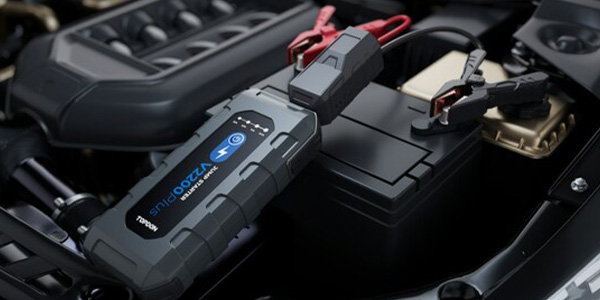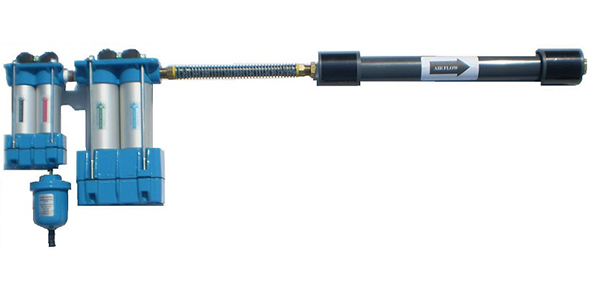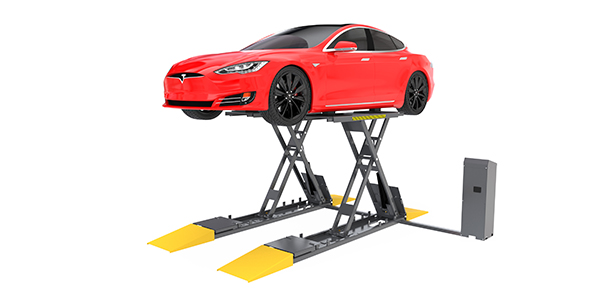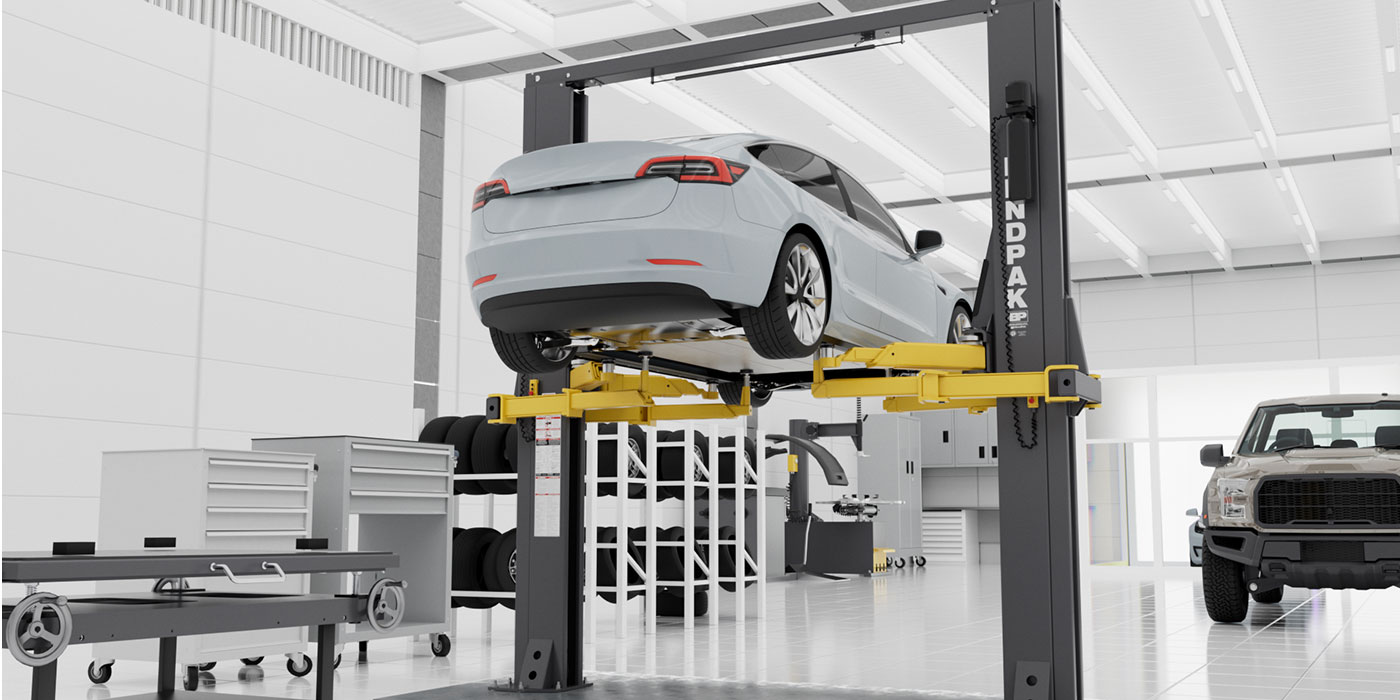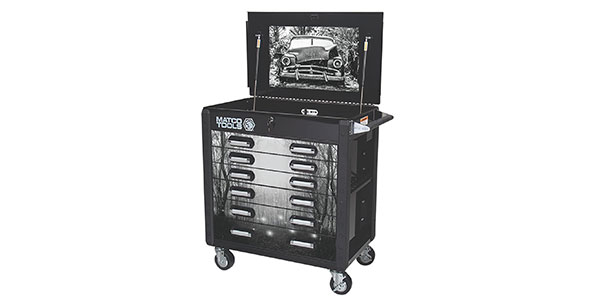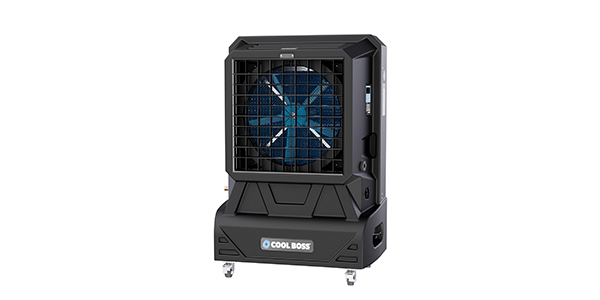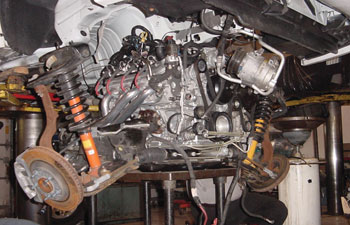
With new car sales down, people are keeping their vehicles longer and racking up more miles on their engines. That means there’s a growing opportunity to install a remanufactured engine in a customer’s vehicle if their original engine or transmission has reached the end of the road.
ENGINES
Most engines will go quite a few miles with proper maintenance. But if the owner scrimps on regular fluid, oil and filter changes, neglects the coolant, never changes the spark plugs, or ignores little problems, it may lead to premature engine failure.
Problems that typically require engine replacement include engine wear and damage resulting from low oil pressure, no oil pressure or contaminated oil, severe overheating caused by loss of coolant or a failed head gasket, loss of compression due to worn or burned valves, or a burned piston, etc. The cost of major repairs is often as much or more than the cost to replace the engine.
Why not just drop in a used engine? Because used engines are always a risk. Even if an engine has low miles on it, there’s no way if the previous owner changed the oil regularly. There’s no way to know what kind of use or abuse a used engine has suffered. Most salvage yards won’t guarantee the condition of the engine, nor will they pay for labor if the motor turns out to be a bad one.
Having a customer’s old engine overhauled or rebuilt is always an option, but the cost of machine work, parts, cleaning, disassembly and reassembly labor often exceed the cost of a remanufactured engine or even a brand new crate engine. Cracked cylinder heads may have to be replaced. Same for a bad crankshaft, camshaft, connecting rods, pistons, lifters or other parts.
A remanufactured engine is one that has been reconditioned to like-new conditions. Parts that usually suffer the 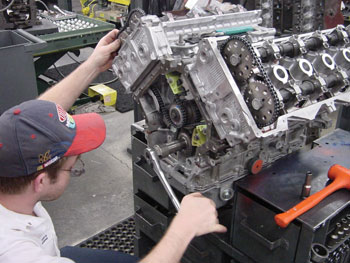 most wear such as bearings, rings, valve springs, exhaust valves and the oil pump are often replaced. If the cylinders are worn, they are bored to oversize and fitted with new pistons. The camshaft and lifters may also be replaced depending on their condition. Cylinder heads and the deck surfaces on the block are resurfaced to assure a good seal. Best of all, most reman engines carry a warranty.
most wear such as bearings, rings, valve springs, exhaust valves and the oil pump are often replaced. If the cylinders are worn, they are bored to oversize and fitted with new pistons. The camshaft and lifters may also be replaced depending on their condition. Cylinder heads and the deck surfaces on the block are resurfaced to assure a good seal. Best of all, most reman engines carry a warranty.
A crate engine, by comparison, is essentially a brand new engine. It usually has a new block, cylinder heads, crankshaft, rods, pistons, camshaft, lifters, pushrods, valves, valve springs, rocker arms, oil pump and other parts. Many crate engines are sold as performance upgrades for stock engines.
REPLACEMENT TIPS
Replacing an engine obviously involves a lot of labor. But that’s good, because labor is what you’re in business to sell. You’re also in business to sell parts, so during the disassembly, pay close attention to the condition of the motor mounts, belts, hoses, spark plug wires, radiator, cooling fan, exhaust manifolds and pipes, engine ground straps, starter, alternator, power steering pump and hoses, A/C compressor and hoses, and anything else that has to be unbolted, disconnected or removed to replace the engine.
The reliability of the engine you are installing will depend on the reliability of the cooling system. Flushing the radiator and the ATF oil cooler in the bottom or side of the radiator will help assure good cooling performance. If the radiator and heater hoses are more than 10 years old, throw them in the trash and replace them with new ones. A new thermostat is an absolute must, along with new coolant and a new water pump (if a water pump does not come with the engine).
The new engine also deserves a new air and oil filter, new spark plugs and plug wires (if equipped).
Don’t reuse the serpentine belt if it is more than five years old or has more than 50,000 miles on it. Same for the automatic belt tensioner.
If the original motor mounts are more than 10 years old, chances are the rubber is getting hard and brittle. Better replace those, too.
Many shops also replace the coolant sensor to eliminate possible trouble, and install new oxygen sensors if the original sensors have more than 75,000 miles on them.
Once the engine is bolted in place and everything has been reattached, refill the crankcase with the specified oil (probably 5W-30 or 10W-30). Opinions differ as to whether or not synthetic oil is the best choice for engine break-in. Some technicians prefer to fill the engine initially with a conventional oil, then switch to a synthetic at the first or second oil change.
Pressurizing the oil system prior to cranking the engine will reduce the risk of a dry start. Once the engine fires, it should be run at 1,500 to 2,000 rpm for about 30 minutes. Don’t let it idle because the camshaft and lifters or followers require plenty of splash lubrication during the initial break-in period.
While the engine is running, check for leaks (coolant, exhaust or vacuum). If any manual adjustments to ignition timing or idle speed are required, do so after the initial 30-minute break-in. Then test drive the vehicle to make sure the engine is performing normally.
Advise your customer to avoid prolonged idling the first 500 miles, and to avoid full throttle acceleration.
Transmissions
Replacing an automatic transmission is a big job. You can easily invest eight to 14 hours of labor or more removing and installing a transmission in a late-model front-wheel drive car. It’s not a job you want to do twice, especially if you are not being reimbursed for your time.
Purchasing a repaired or locally remanufactured transmission is another option, and a far better choice than a used transmission. But in a high mileage vehicle, the part that failed may not be the only component that is worn or nearing the end of its service life.
Another option is to install a remanufactured transmission. Reman transmissions usually cost more than repaired or used transmissions, but they’re the most cost-effective alternative to a brand-new transmission (which may not even be available depending on the year, make and model of the vehicle).
A reman transmission is one that has been completely disassembled, cleaned, inspected and restored to like-new (or better than new) condition. During the remanufacturing process, worn or damaged parts are replaced with new or reconditioned parts. Nothing is reused unless it meets all specifications. All the old gaskets and seals are replaced with new ones. The valve body is cleaned and tested to make sure it works properly. If any upgrades or revisions are needed, these may also be made when the transmission is remanufactured.
Quality-conscious remanufacturers will also dyno test the complete unit after it has been reassembled to make sure it develops normal operating pressures, doesn’t leak and shifts properly.
Another plus with a remanufactured transmission is that it usually comes with a warranty. Some remanufacturers offer up to a three-year, 100,000-mile warranty that also covers labor should the unit have to be replaced.
One of the first things that should always be done before you install a reman transmission is to figure out why the old transmission failed. Don’t assume it died because it had a lot of miles on it. No transmission lasts forever, but with proper maintenance (regular fluid and filter changes), some automatic transmissions may go 150,000 miles or more before they call it quits.
If the original transmission failed at relatively low mileage (say less than 75,000 miles), the condition of the fluid may reveal why it failed. Good transmission fluid should be red or pink and smell like gear oil. Transmission fluid that has overheated and oxidized will be brown to black and smell like burnt toast. Overheating can be caused by a plugged ATF oil cooler or restrictions in the transmission oil cooler lines. It can also be caused by overworking the transmission (towing a heavy trailer, carrying heavier-than-normal loads, racing or abuse). You should ask the vehicle owner about their driving habits and how they have been using the vehicle.
Letting the fluid level get too low in an automatic transmission (due to leaks, never checking the fluid level, or not refilling the transmission to the correct level after a fluid change) can also cause the fluid to run hot and overheat.
Clutch piston failures may be due to old age and metal fatigue, but can be accelerated by higher than normal pressures inside the transmission. Higher than normal pressures can cause harsh shifts that increase wear and stress on gears and clutch packs. Internal pressure is regulated by the Electronic Pressure Control (EPC) solenoid, so if it sticks it can cause problems. But a loose or corroded wiring connector on the solenoid may also affect its operation. Consequently, it’s important to inspect the wiring and connectors that go to the EPC and other control solenoids on the old transmission to make sure a wiring fault didn’t cause the failure. If it did, and you failed to detect the wiring problem, the replacement transmission may suffer the same fate.
OIL COOLERS & LINES
The transmission oil cooler’s job is to cool the fluid and help maintain a consistent operating temperature in the transmission. The oil cooler on many vehicles is nothing more than a small loop of pipe inside one of the end tanks on the radiator.
Metal lines or rubber hoses route the fluid between the transmission and cooler. The internal pressure in the lines and cooler average 75 to 125 PSI on many transmissions, and can sometimes rise to 300 PSI on some newer electronic transmissions. If a leak develops in a line or cooler, it can lead to fluid loss or coolant cross-contamination. Coolant is a poor lubricant and can damage the transmission.
On applications that have rubber hoses, the hoses may become hard and brittle over time increasing the risk of cracks and leaks. The inside of the hose may also flake loose allowing debris to enter the transmission or plug the cooler. Even metal oil cooler lines can fail. Vibration and external corrosion may cause the lines to crack or leak.
Flushing out the original lines and cooler is better than doing nothing at all, but if debris remains and later comes loose, it will end up in the transmission. Better to replace the lines and cooler so you know everything is clean and unobstructed.

